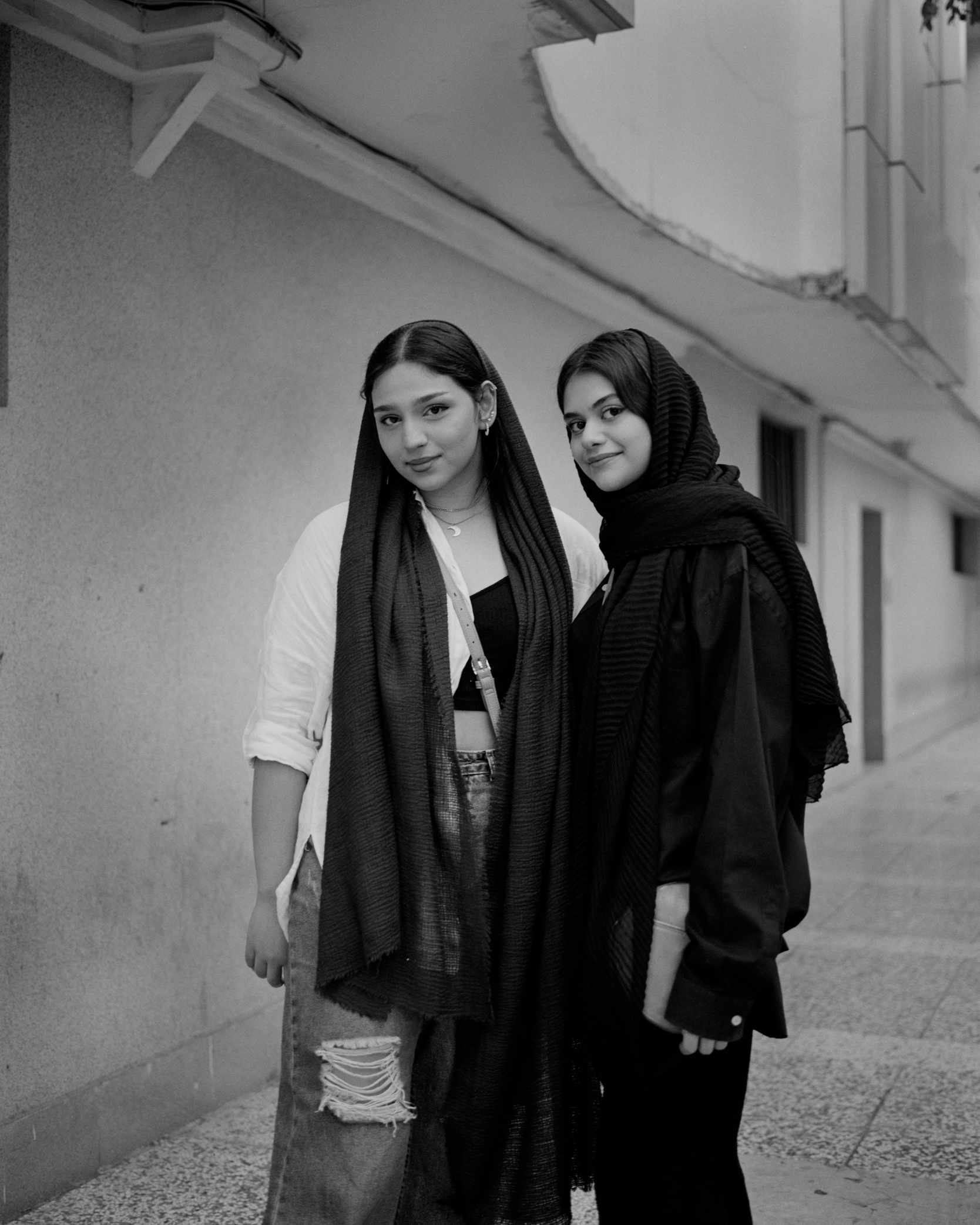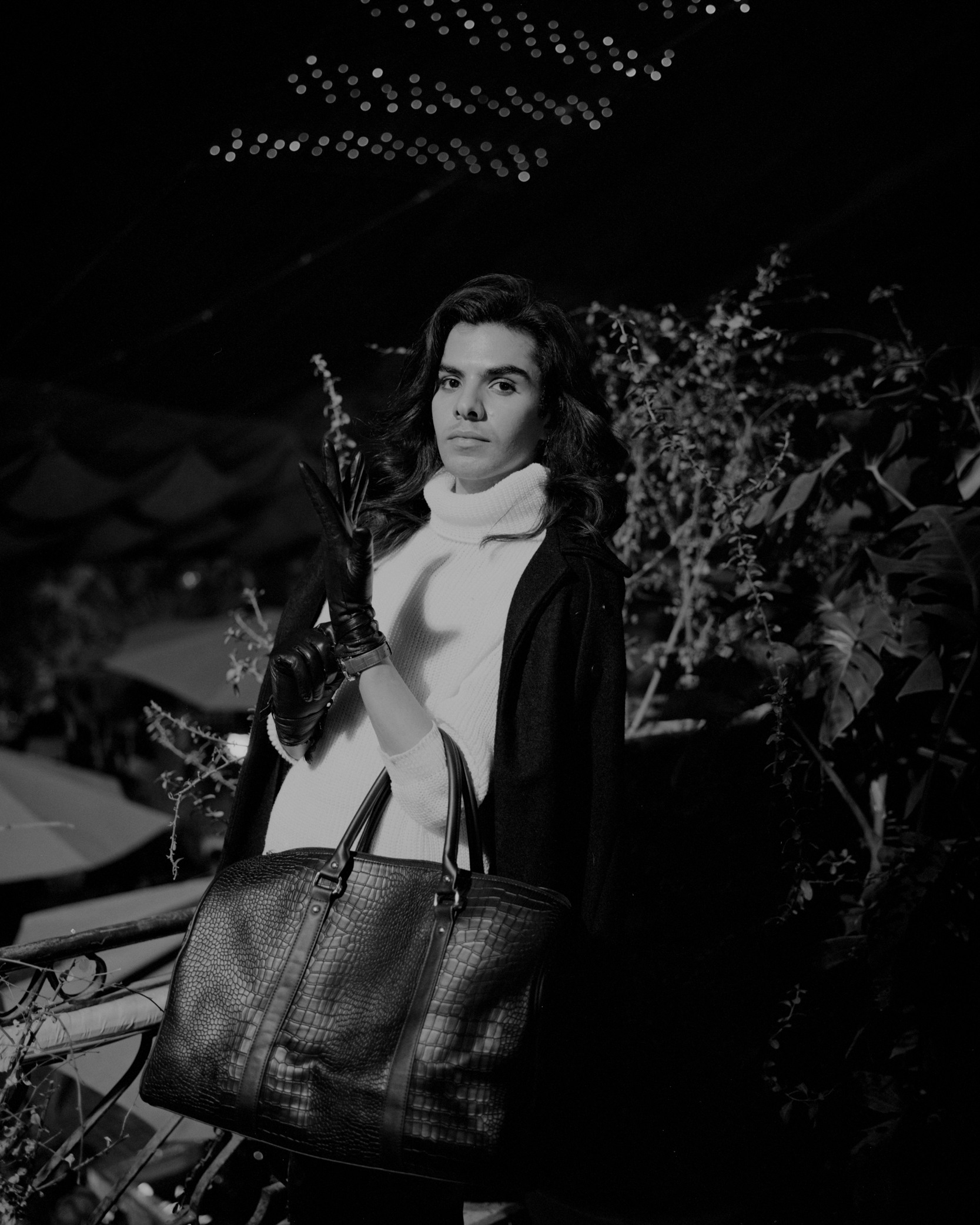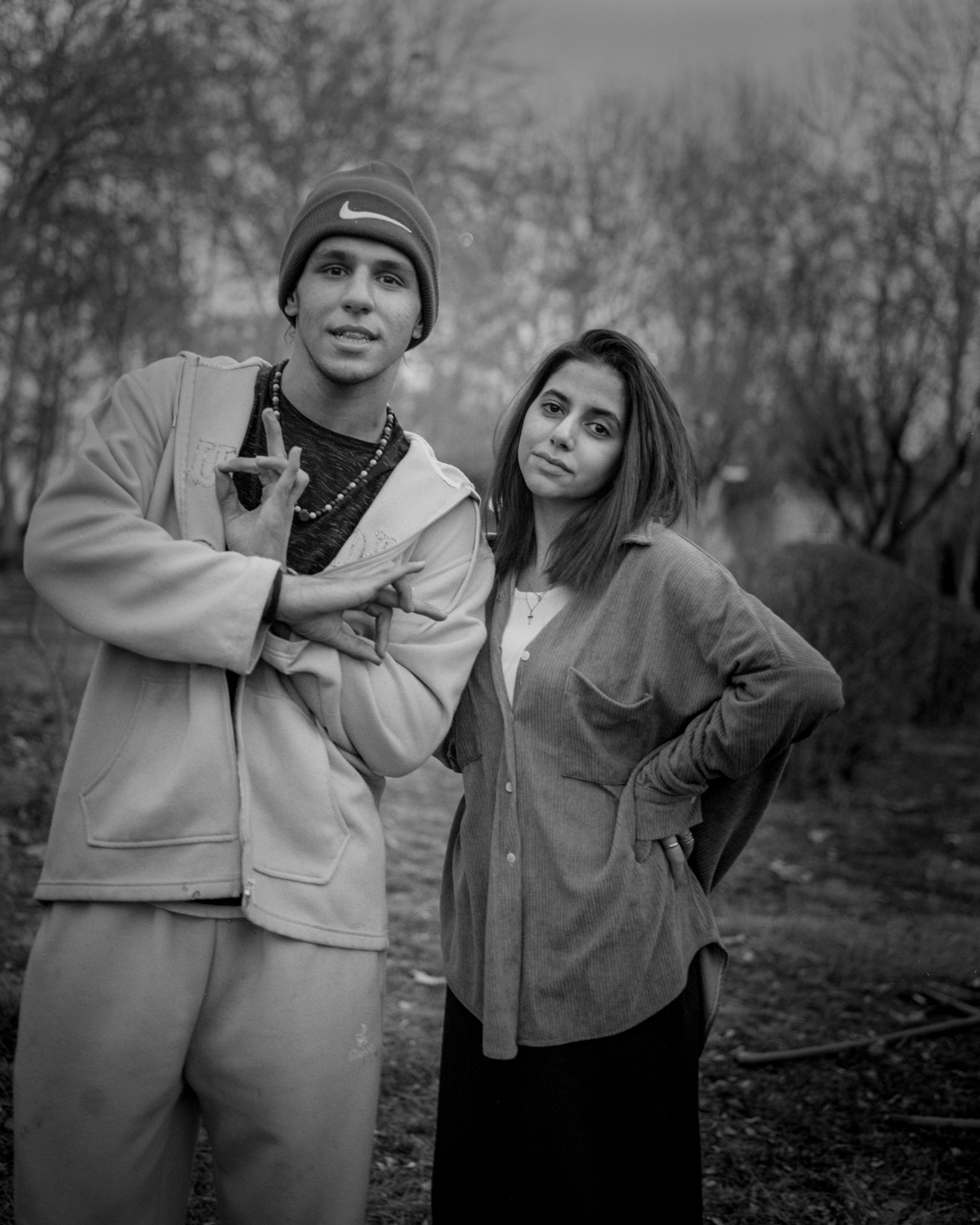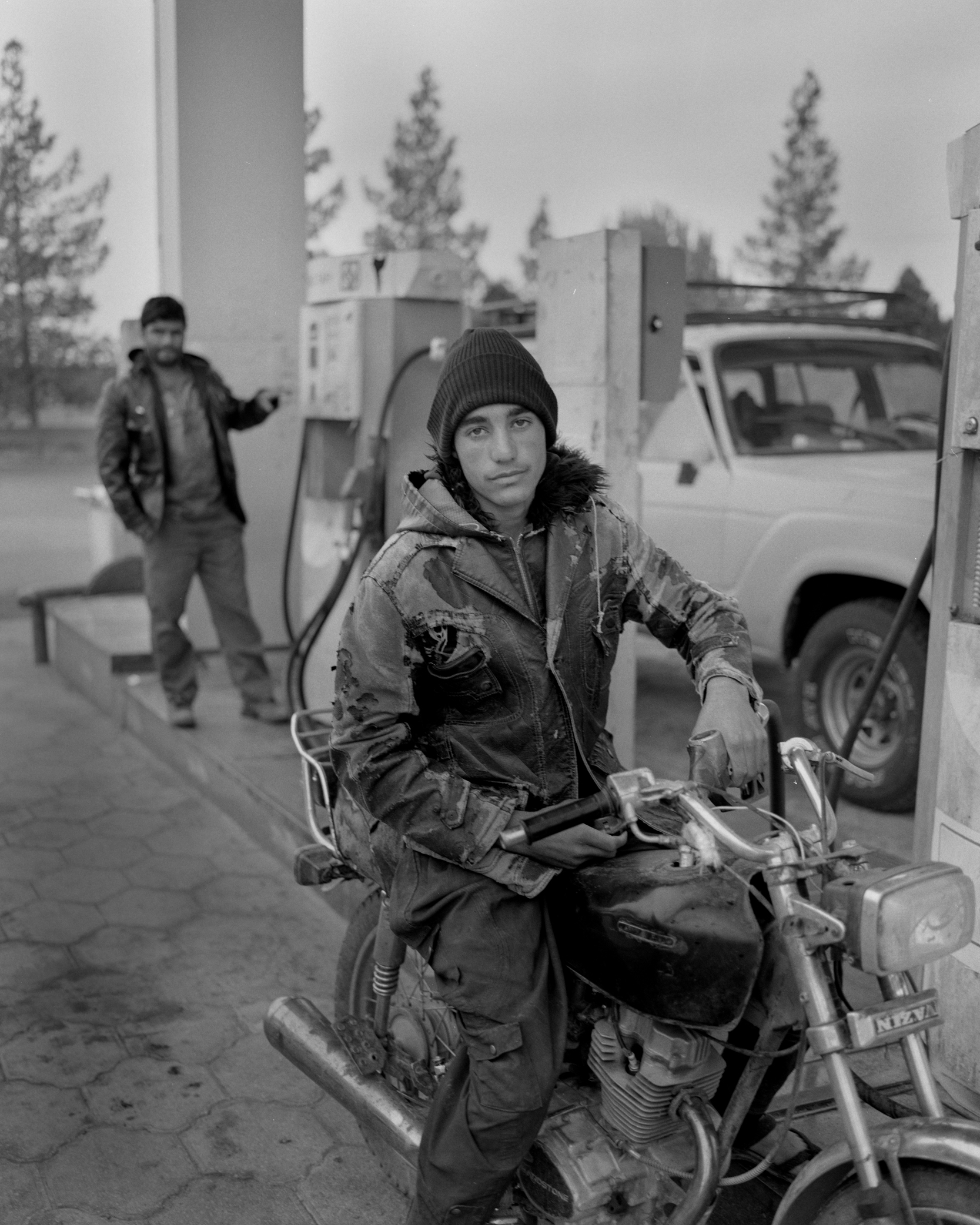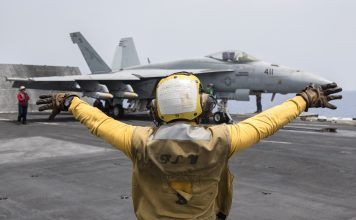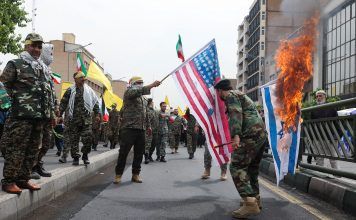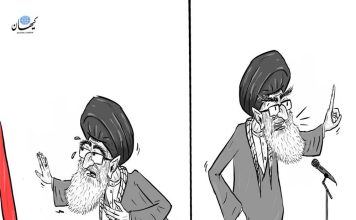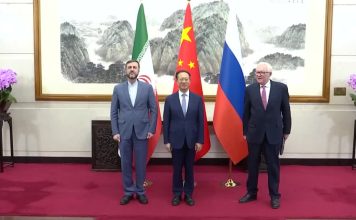By Firouzeh Nabavi
Alexandre Arminjon is a French-Swiss photographer based in Paris. He is also the co-founder of a shared darkroom that doubles as an exhibition space.
Ithaque, as the space is called, is now hosting an exhibition of portraits of Iranians taken as recently as in August 2022 — weeks before the start of the uprising that followed the death in custody of 22-year-old Mahsa Amini.
The exhibition is on at Ithaque (located at 5, rue des Haudriettes, 75003 Paris) through February 4.
Kayhan Life caught up with the photographer to find out more about his impressions of Iran.
Can you please describe your background and education and what brought you to the world of photography?
I became a photographer a little late, at age 29. I had graduated with a finance degree, but at one point, like many others, I burned out, and set out to do something meaningful with my life.
What attracted you to Iran and its people? Why did you visit the country three times between May 2017 and August 2022 to document contemporary Iranian society?
At the time of my first Iran trip in 2017, Iran was on the verge of becoming quite a popular tourism destination. I simply followed in the footsteps of friends and family members who had traveled to Iran before me. I find it hard to explain why, but of all the countries I have taken photos in, Iran is the only one in which I became attracted to making portraits of the people. I think I was attracted by the cultural proximity between Europe and Iran, and the very welcoming nature of Iranian people towards foreigners.
[aesop_image img=”https://kayhanlife.com/wp-content/uploads/2022/11/Alexandre-Arminjon-27-2022-01-Esfahan.jpg” panorama=”off” credit=”Alexandre Arminjon – #27 – 2022-01 – Esfahan” align=”center” lightbox=”on” captionsrc=”custom” captionposition=”left” revealfx=”off” overlay_revealfx=”off”]
Your last visit was exactly one month before nationwide protests broke out over the death of Mahsa Amini. Did you get a sense of the tensions in the country, and what do you think of these protests?
In August 2022, I sensed that something important was happening, as all of the people I was meeting on the road were complaining much more openly about their deep dissatisfaction with the Islamic Republic. Also, they complained a lot about the economical situation.
In my prior trips —¸in 2017, and in the winter of 2021 — I had the impression that talking politics with foreigners was tricky and something that Iranian people preferred to avoid. Also, in 2022, I saw many more women simply not wearing headscarves as compared with 2017, and accepting to be photographed, showing how unafraid they were.
From a foreigner’s perspective, the first impression I have is one of deep courage of the protesters, who dare risk their lives to demonstrate more than just how fed up they are with the situation: that their ideals and quest for fundamental rights are more important than their lives. This is extremely inspiring. The Iranian people speaking up today, and especially the women, are an example for all people seeking freedom outside of Iran. The energy of the people going out on the streets is unstoppable, and it can’t be long before profound political change happens in Iran.
One noticeable change in your 2022 portraits in Tehran is the “unveiling” of Iranian women who are pictured without headscarves. Were they wearing headscarves which they removed for the photo?
No, I never asked anyone to remove their headscarves, it would be wholly inconsistent with my documentary approach. What I wanted was to communicate how people appropriated the public space, and show that the rules governing the use of the public space were changing really fast, and that the people from the Islamic Republic, because their message is irrelevant with the young people, simply can’t control what everyone is doing in the streets.
[aesop_image img=”https://kayhanlife.com/wp-content/uploads/2022/11/Alexandre-Arminjon-74-2022-08-Kurdestan.jpg” panorama=”off” credit=”Alexandre Arminjon – #74 – 2022-08 – Kurdestan” align=”center” lightbox=”on” captionsrc=”custom” captionposition=”left” revealfx=”off” overlay_revealfx=”off”]
What was the primary focus of each of your trips?
My first trip in 2017 was really for tourism, with no clear focus. Put simply, I wanted to discover the many wonders of Iran, starting with Yazd, Esfahan, and Persepolis, and get close to the desert. And I started to meet the Iranian people. I made several portraits, but it was not systematic.
After 2017, I embarked on a desert photography project in the Atacama desert in Chile. I went there twice, and this made me want to come back to Iran to explore the Dasht-e Lut desert more, which is why I traveled to Iran in the winter of 2021. In August 2022, I came back with a clear portrait focus, and attempted to document the more traditional and religious segments of the Iranian society, which I was scared to approach during my first two trips. The Ashura festival was the perfect occasion.
Which parts of the country did you visit during those trips and what were your impressions of the country and its people?
I have visited Yazd three times, Esfahan twice, the Dasht-e Lut desert twice, also Mashhad twice. I have been to Tabriz twice and got to travel a bit inside Kurdistan. I have also visited Bandar Abbas. I have spent some time in Tehran on each of my three trips, both in the center, the south and the north of the city. My general impression of Iran as a traveling foreign photographer is, first, a sense of high public security – the odds of getting mugged or assaulted in Iran are low. In Tehran, traffic is quite often out of control, but in the rest of the country, the urbanism and the state of the roads and public infrastructure is good.
Everywhere I have been in Iran, I met people who all had open hearts to foreigners. The fact that I shoot all my photography with an analogue vintage camera perhaps helped create the connection. Very often, I was asked if I worked for a magazine or a newspaper, and because I am not a photojournalist working with the Western media, it opened many doors for me. I always presented myself as an artist who prints pictures in his darkroom.
[aesop_image img=”https://kayhanlife.com/wp-content/uploads/2022/11/Alexandre-Arminjon-66-2022-08-Mashhad.jpg” panorama=”off” credit=”Alexandre Arminjon – #66 – 2022-08 – Mashhad” align=”center” lightbox=”on” captionsrc=”custom” captionposition=”left” revealfx=”off” overlay_revealfx=”off”]
You portray a wide spectrum of Iranian society: young/old, rich/poor, modern/religious. How difficult was it to photograph these people as a non-Persian-speaker who could not communicate with them directly? Was it more difficult to photograph some than others?
On my first trip in 2017 I was traveling mostly on my own and then indeed it was hard approaching the non-English speaking Iranian people. But for my two trips in Winter 2021 and August 2022, I traveled with a guide from Yazd named Masoud Jaladat. At first I had hired him only to go into the Dasht-e Lut desert, but we connected very well and with him I got to meet many people whom I otherwise could not communicate with.
For a while I was scared to photograph the religious/traditional people in Iran, but it did not turn out to be a problem. The most complicated people to photograph were by far the rich people in northern Tehran. In these areas, there are a lot of private security guards. At one point, Masoud and I were interrogated in a basement of a luxury shopping center. We had to answer so many questions, and these were just private security guards, not even official police…
Another time, in 2017, I was interrogated on a train by two plainclothes security forces, probably Basij militiamen, who wrote down my answers to their questions.
I always felt that I had nothing to hide so I always answered the questions candidly. The one thing that is risky in Iran – and in a lot of other places – is taking photographs of people without permission.
How have Iran and its people changed since your first trip in 2017?
The economic situation has worsened considerably and it definitely impacts the daily lives of a vast majority of Iranians. Again, people talk much more openly about politics, and the very strong anti-American and anti-Semitic rhetoric of the Islamic republic regime is becoming increasingly irrelevant to the people of Iran. It is important to state that the people of Iran are not anti-Western or anti-American, or anti-Semitic. But a lot are anti-Trump, because his unilateral withdrawal of the nuclear agreement in 2018 was so costly for the Iranian people.
[aesop_image img=”https://kayhanlife.com/wp-content/uploads/2022/11/Alexandre-Arminjon-70-2022-08-Mashhad.jpg” panorama=”off” credit=”Alexandre Arminjon – #70 – 2022-08 – Mashhad” align=”center” lightbox=”on” captionsrc=”custom” captionposition=”left” revealfx=”off” overlay_revealfx=”off”]
You have an interest in spirituality and inter-religious dialogue. Can you elaborate?
In France, which is the country where I live, we have had problems due to Islamophobia and constant discrimination against the Muslim community in French society. We live in times where we all must strive to understand diversity better, to understand people with different cultures and beliefs, because the cultural and identity norms of the past are no longer functioning. I am a Christian myself and if Christianity teaches us one thing, it is to try to love one another and build bridges between people, not walls.
What were your impressions of the state of the country and its people during your last trip in August of this year?
I sensed that something was changing in the way women were wearing headscarves and that almost all people including the more traditional people were absolutely fed up with the economic situation.
Do you have any plans to return to Iran in the near future?
I feel frustrated to not be able to go back to Iran now; as much as I would love to document the current protests and struggle for freedom, in my understanding of Iran I can’t see how a foreign photographer can work there now. I will try to improve my rudimentary Persian and come back whenever possible and whenever the situation has improved, hopefully with more freedom.


